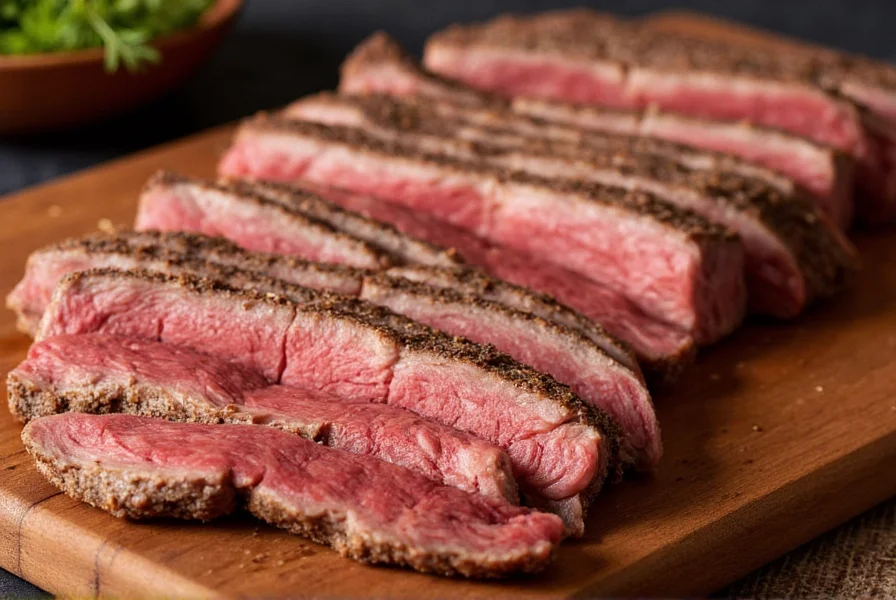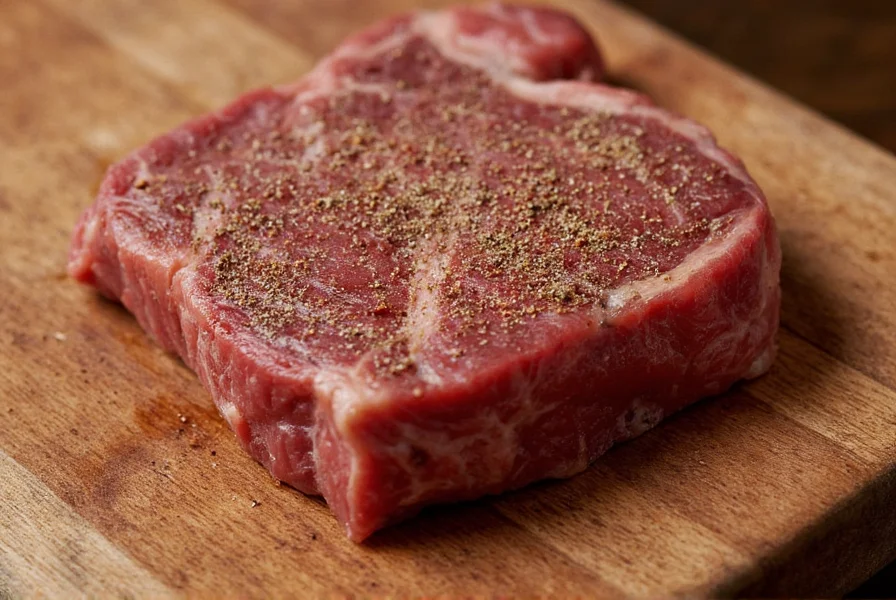The most effective way to season steak is to generously coat both sides with coarse kosher salt 45-60 minutes before cooking, allowing time for the salt to dissolve and penetrate the meat through osmosis. Add freshly ground black pepper and optional seasonings just before cooking to prevent burning. This dry brining method enhances flavor throughout the steak while promoting superior crust formation during cooking.
Seasoning steak properly transforms an ordinary cut into an extraordinary meal. Many home cooks make critical errors that compromise flavor and texture, from seasoning too late to using the wrong salt type. Understanding the science behind seasoning helps you achieve restaurant-quality results consistently.
The Science of Steak Seasoning
When you apply salt to steak, a fascinating process begins. Initially, the salt draws out moisture through osmosis. Within 5-10 minutes, this moisture dissolves the salt, creating a brine that's then reabsorbed into the meat. This process:
- Enhances flavor penetration beyond just the surface
- Breaks down muscle proteins for improved tenderness
- Creates optimal conditions for Maillard reaction during cooking
- Helps form that desirable caramelized crust
Timing matters significantly. Seasoning too close to cooking leaves surface moisture that steams rather than sears the meat. Seasoning too early (beyond 90 minutes) can make the surface overly wet. The 45-60 minute window provides the perfect balance for most home cooking scenarios.
Essential Seasoning Components
While steak seasoning can become complex, mastering the fundamentals yields the greatest improvement:
| Seasoning | Recommended Amount | Application Timing | Special Notes |
|---|---|---|---|
| Kosher salt | 1 tsp per pound | 45-60 min before cooking | Use Diamond Crystal for consistent results |
| Freshly ground black pepper | 1/2 tsp per pound | Immediately before cooking | Burns easily at high heat |
| Garlic powder | 1/4 tsp per pound | Immediately before cooking | Use sparingly to avoid bitterness |
| Onion powder | 1/4 tsp per pound | Immediately before cooking | Complements beef flavor profile |
Step-by-Step Steak Seasoning Process
Follow this precise method for perfectly seasoned steak every time:
- Prepare your steak: Remove from refrigerator 60 minutes before cooking to reach room temperature
- Dry the surface: Pat thoroughly with paper towels to remove excess moisture
- Apply salt: Sprinkle kosher salt evenly over both sides (about 1 tsp per pound)
- Rest: Place on wire rack for 45-60 minutes to allow salt penetration
- Add finishing seasonings: Just before cooking, apply pepper and any additional dry seasonings
- Cook immediately: Proceed to your preferred cooking method without additional resting
Avoiding Common Steak Seasoning Mistakes
Even experienced cooks make these critical errors when seasoning steak:
- Using table salt instead of kosher salt: Table salt's finer grains and additives create uneven seasoning and potential bitterness
- Seasoning immediately before cooking: Prevents proper salt absorption and leaves surface moisture that inhibits browning
- Adding pepper too early: Causes burning and bitter flavors during high-heat cooking
- Under-seasoning: Steak needs more salt than you might expect to properly penetrate the meat
- Using wet marinades as primary seasoning: Creates steaming effect rather than proper sear

Special Considerations for Different Cuts
While the basic seasoning principles apply universally, certain cuts benefit from specific approaches:
- Thick-cut steaks (2 inches or more): Extend dry brining to 90 minutes for deeper penetration
- Fatty cuts (ribeye, wagyu): Reduce salt slightly as fat carries additional flavor
- Lean cuts (filet mignon): Be precise with timing to prevent excessive moisture loss
- Thin cuts (hanger, flank): Season immediately before cooking to minimize moisture extraction
Tools That Make a Difference
While you don't need specialized equipment, these tools improve your seasoning results:
- Mortar and pestle: For freshly grinding whole peppercorns just before application
- Wire rack: Allows air circulation during dry brining for optimal surface drying
- Measuring spoons: Ensures consistent seasoning across multiple steaks
- Thermometer: Prevents overcooking, which can make even perfectly seasoned steak unpleasant

Advanced Seasoning Techniques
Once you've mastered the basics, consider these professional approaches:
- Compound butter finish: After cooking, top with herb butter that melts into the steak
- Finishing salts: Add a light sprinkle of flaky sea salt after cooking for texture contrast
- Smoke seasoning: For grilled steaks, add wood smoke during the last few minutes of cooking
- Acid balance: A light squeeze of lemon or vinegar after cooking can brighten rich flavors
Remember that proper steak seasoning isn't about covering the meat's natural flavor but enhancing it. The best seasoning techniques allow the quality of the beef to shine through while adding complementary flavors and textures.
Frequently Asked Questions
How long before cooking should I season steak with salt?
For optimal results, season steak with salt 45-60 minutes before cooking. This allows sufficient time for the salt to dissolve, penetrate the meat through osmosis, and be reabsorbed, enhancing both flavor and texture. For thicker cuts (over 2 inches), you can extend this to 90 minutes.
Can I use table salt instead of kosher salt for seasoning steak?
While you can use table salt, kosher salt is preferred for steak seasoning. Table salt has finer grains and often contains additives that can create uneven seasoning and potential bitterness. If substituting, use about half the amount of table salt compared to kosher salt, as its smaller crystals pack more densely.
Should I season both sides of the steak equally?
Yes, you should season both sides of the steak evenly. Proper seasoning requires consistent coverage on all surfaces that will be exposed during cooking. Don't forget to season the edges of thicker cuts as well, as these surfaces also contribute to the overall flavor profile.
Why does my steak become wet after salting?
This is a normal part of the dry brining process. Initially, salt draws moisture from the meat through osmosis. Within 5-10 minutes, this moisture dissolves the salt, creating a brine that's then reabsorbed into the meat. If your steak appears wet after 30-45 minutes, gently pat it dry with paper towels before cooking to ensure proper searing.
Can I season steak and then refrigerate it overnight?
Yes, the overnight dry brine method works well for thicker cuts. Place the salted steak on a wire rack in the refrigerator uncovered for 12-24 hours. This extended period allows deeper salt penetration and surface drying, which creates an exceptional crust when cooked. Just remember to bring the steak to room temperature for 60 minutes before cooking.










 浙公网安备
33010002000092号
浙公网安备
33010002000092号 浙B2-20120091-4
浙B2-20120091-4